Have student debt? You’re not alone. For many getting post-secondary education, student debt will be a part of your finances once you’re finished.
There is a 6 month grace period once you finish school before you have to start paying it off, but unfortunately, the interest starts adding up the second you graduate.
It almost goes without saying – you’re going to want to pay your student loans off as quickly as possible.
So to help, we’ve got 7 tips to make it happen.
Never miss an amazing deal again + get our bonus 250+ page eBook for FREE. Join 50,000 other Canadians who receive our weekly newsletter – learn more.
How much student debt is in Canada?
According to statistics from the Canada Student Loans Program, in the 2014 – 2015 fiscal year, the government gave out $2.7 billion in student loans to 489,000 full time students, and another $20.9 million to 12,000 part time students.
Ooof.
Here’s a breakdown of the average student loan debt in Canada:
- university students typically owe $16,727,
- college students typically owe $10,172, and
- doctoral students typically owe $29,000.
That’s a lot of student loan debt.
And did we mention that tuition fees increased by over 3% for undergraduate programs in the 2017 – 2018 academic years? It doesn’t look like it’s getting any better…
7 tips to pay your student debt faster
Because you’ve gotta do it sometime, here are a few tips to paying off your student debt.
Keep in mind that while these tips work for some people, they don’t all work for everyone. You just have to find an option that works for you, based on your personal financial habits, income, and the amount of student debt you’re carrying.
1. Take a hard look at your finances, including your spending
I know. Easier said than done. But the truth about budgeting?
It works.
The easiest way to do this is to look at (or even print out) your bank account transactions and break them into categories. Depending on what your lifestyle is like, your categories might include:
- groceries,
- bills, subscriptions, and housing,
- entertainment,
- transportation,
- miscellaneous, and finally,
- student loan monthly payment amount.
The amounts in these categories can surprise you, which can be a good or bad thing.
Ask yourself how much you really need for these things. Are there improvements that can be made? Are you overspending on a certain category when there are definitely alternatives?
Set up a budget that leaves room for emergency spending and prepare for the unexpected, follow it as strictly as possible, and you’re one step closer to being able to make your monthly student loan payments.
And make sure if you’re using a student credit card, you’re using one that’s working for you.
Here’s the best no fee, flexible, cash back credit card in Canada, so you can put that extra cash towards becoming a personal finance boss.
GC: $120
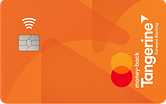
2. Use a loans calculator and see how long it’s going to take you to pay off
It pays to know what you owe.
Luckily, the Government of Canada has a loan repayment estimator that will help you figure out how much you’ll need to pay back each month, depending on factors like how long you want to take to pay off your debt, if you’d like to take advantage of the non-repayment period, and more.
It can give you a good idea of what you should expect for a bill at the end of each month.
3. Pay as often as you can
It’s understandable to make paying back your student loan debt your first priority. After all, the numbers can seem pretty big, and the task of paying it off daunting.
But student loan debt is relatively cheap debt. This is because they usually have some pretty cheap interest rates, which are currently a fixed rate of 8.95% or a variable rate of 6.45%.
We won’t go too into the argument of whether it’s good or bad debt, but if it’s helped you get closer to a good job that you’ll love more than the options you had before, then it can’t be all that bad.
Because student loan interest is cheap, you might want to focus on getting further ahead in other areas of your life.
Build up an emergency fund, a savings account, maybe even try going for homeownership.
It’s always a bad idea to pay the least amount you can on a high interest credit card, but not necessarily on your student loans. It’s okay to only make the minimum payments.
If you’re not completely sold on paying it low and slow, try making another payment with any extra cash you have at the end of the month. Any additional payments will be deducted from the principal, not just the interest, so you’re paying your loan directly at that point.
This way, you’re paying as often as you can and reducing that scary total.
Are you a Canadian student in your 2nd year of post-secondary education or higher? Click here to learn more about our $2,000 scholarship.
4. Exceed your minimum payments
A lot like paying as often as you can, you can pay more than you need to.
Confused? Here’s the scoop.
You can tack on extra to the amount you’re paying at the end of the month. This way, it’s not an extra payment, just a larger one.
Again, anything over your agreed-upon payment will be deducted from your principal.
5. Use your tax refund to pay down your student loans
True fact – you can claim the interest paid on your student loans on your taxes (but not any principal). It basically helps lower your net income – which is the income you actually pay taxes on.
In most cases, this will help generate a refund when you pay your income taxes, and you can use that money to pay your loan. Here’s the page from the CRA on how it works.
And if it’s your first year after finishing school, you should still have tuition credits you can use as well on your taxes, boosting the size of your refund.
6. Call National Student Loans Center and see what your payment options are
If you’re struggling to make payments, or just simply need some answers, it’s never a bad idea to discuss your options with the people who know the most.
Here’s the toll-free telephone number:
- 1 888 815-4514 (within North America)
- 800 2 225-2501 (outside North America)
7. Consider student loan debt consolidation ‒ but proceed with caution
Debt consolidation should often be looked at as a final option.
Honestly, because the Canada Student Loans interest rate is so reasonable, and you’re able to extend your loan to what seems like forever, it probably shouldn’t be an option.
But if you’re that committed to not paying “the man,” you can try debt consolidation through a third party company or taking out a line of credit. Just remember that the interest rate will more than likely be higher, and the terms of debt consolidation can be tricky.
The reminder that is always worth repeating over and over again:
Read the fine print.
We want to hear from you
Have you paid off your student debt?
Any tips we didn’t mention?
Let us know in the comments below.
FAQ
Should I take out a line of credit to pay off my student loans?
Like we said above, probably not.
But if you honestly feel like the terms and interest rate are better suited for you, no one knows you better than you do. Just keep in mind that you can’t take it back once you’ve decided to go that route.
How long before my interest starts kicking in?
Interest on your student debt starts kicking in as soon as you graduate. You won’t be paying it for 6 months if you’ve decided to take advantage of the grace period, but it’ll still be there collecting.
How long do I have to pay off my student loans?
That one’s up to you.
The loan repayment estimator we mentioned maxes out at 15 years, but many people take longer than that – you just need to contact the NSLC and request a revision of terms.
Remember though that the longer you take, the more interest you’re paying on your student debt.
How much student loan debt is a lot?
That’s relative to you and your situation. If you’re studying to be a doctor, the tuition fees are out of this world, but your salary is a lot higher if you end up getting a job after you’re done school. If you choose to take a course that isn’t necessarily related to the career path you aspire to, then the money paid towards your tuition is a lot because it may not be worth it in terms of earning a better salary.
Where do I go if I need help with my student loan debt?
It’s never a bad idea to ask for help. The Government of Canada student aid website has great information on your student debt and repayment options.
Do student loans go away after 7 years in Canada?
In order to avoid having an excessive number of people defaulting on their student debt, bankruptcy law in Canada was changed so student loans are not covered or extinguished after bankruptcy or a consumer proposal if it has been less than 7 years from the last study date. So, no, if you’re having problems paying off your student debt, it won’t just magically go away after 7 years, and you can’t even get rid of them by declaring bankruptcy.
What happens if you don’t pay student loans in Canada?
If you don’t pay your student debt, you’re declared to be in default after 9 months. At this point your loans will be sent to the Canada Revenue Agency for collection, who have the authority to freeze your bank accounts and garnish your wages. This is, of course, a terrible option, so you should use some of our strategies to help pay your student debt faster.
Can student loans be claimed on income taxes?
Yes the interest paid on student loans can be claimed on income taxes. Just note you can’t claim the principal paid back on your taxes.
creditcardGenius is the only tool that compares 126+ features of 231 Canadian credit cards using math-based ratings and rankings that respond to your needs, instantly. Take our quiz and see which of Canada's 231 cards is for you.



 ×1 Award winner
×1 Award winner  $120 GeniusCash + Up to $100 bonus cash back** + No annual fee.*
$120 GeniusCash + Up to $100 bonus cash back** + No annual fee.*



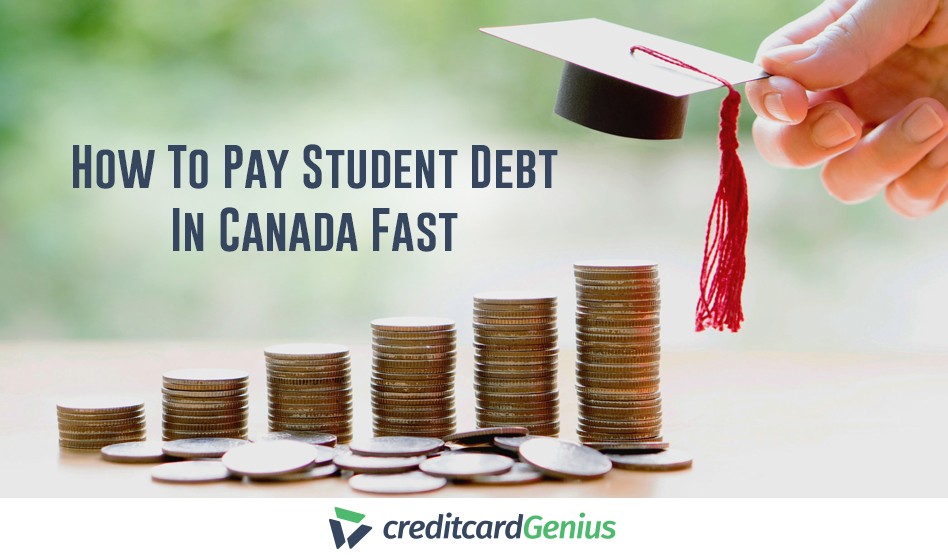
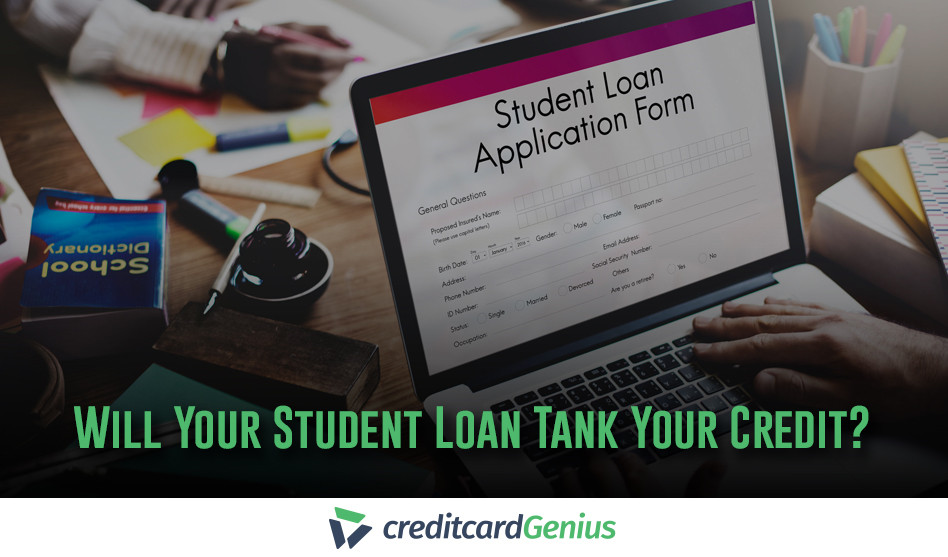


 GC:
GC: 
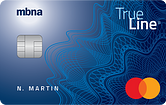
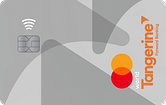
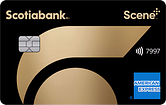
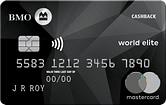
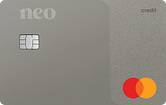
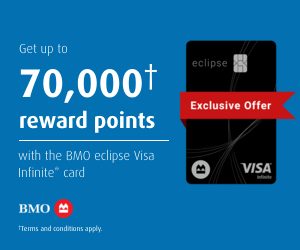
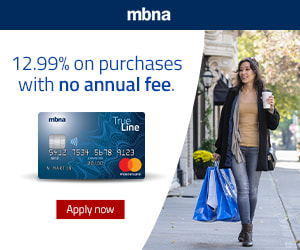
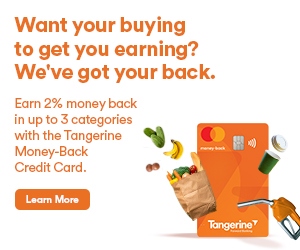



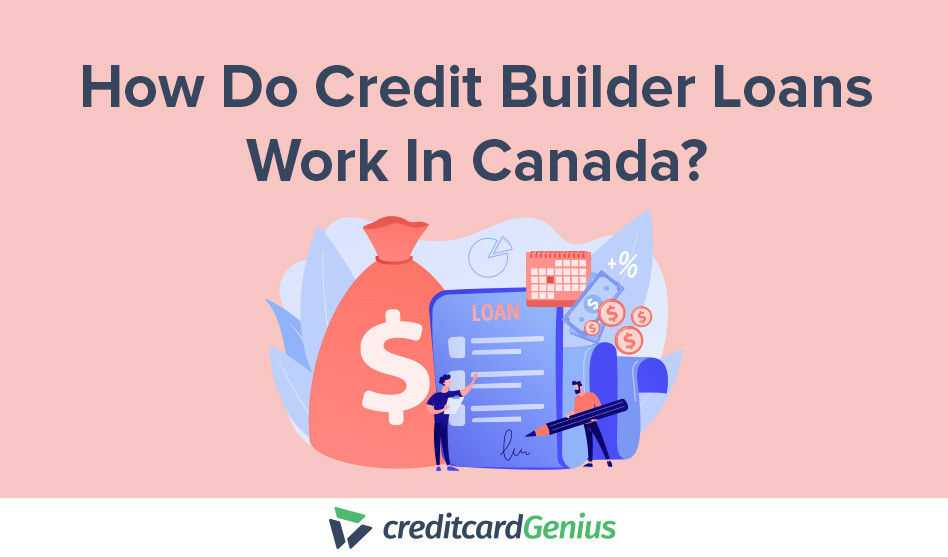

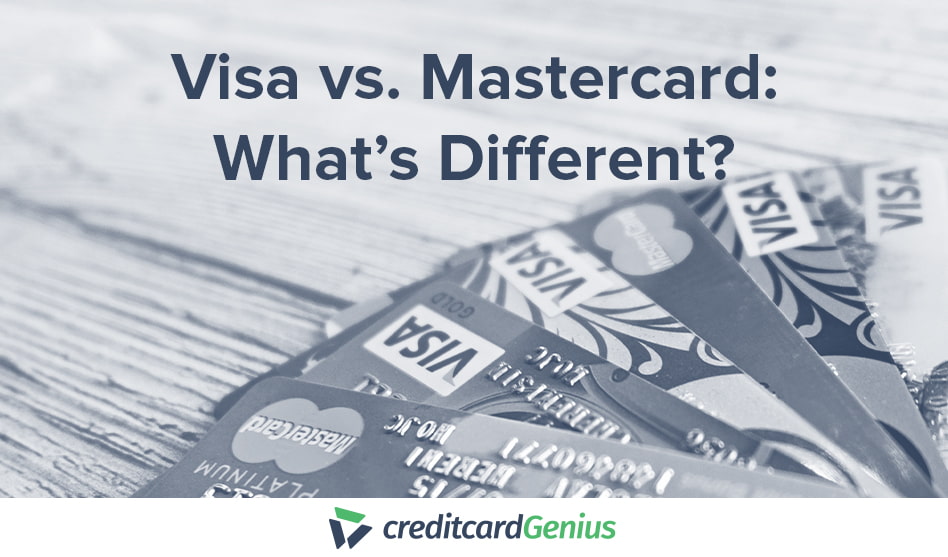
.png)




















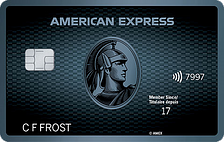
Comments
Leave a comment
Required fields are marked with *. Your email address will not be published.